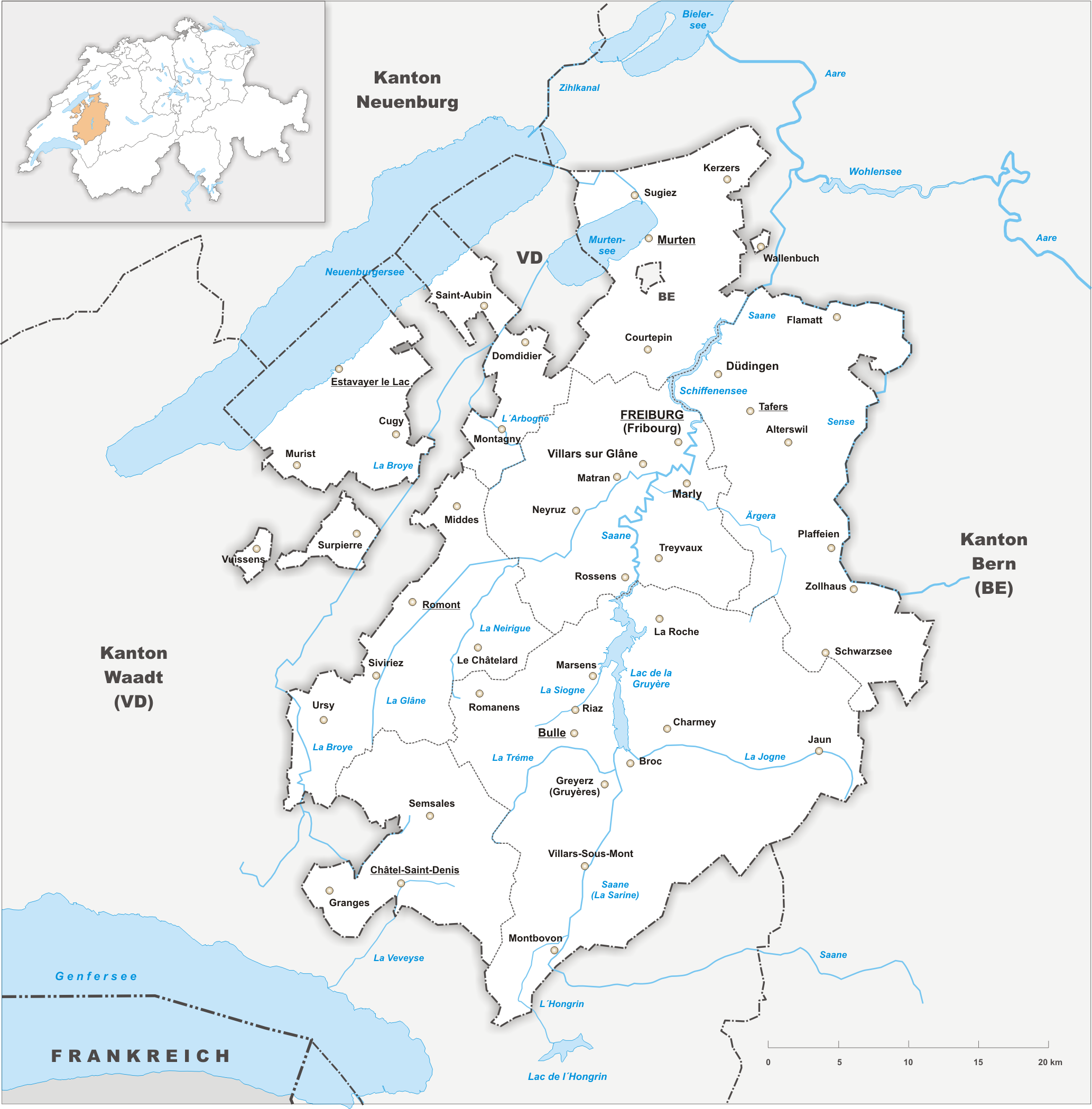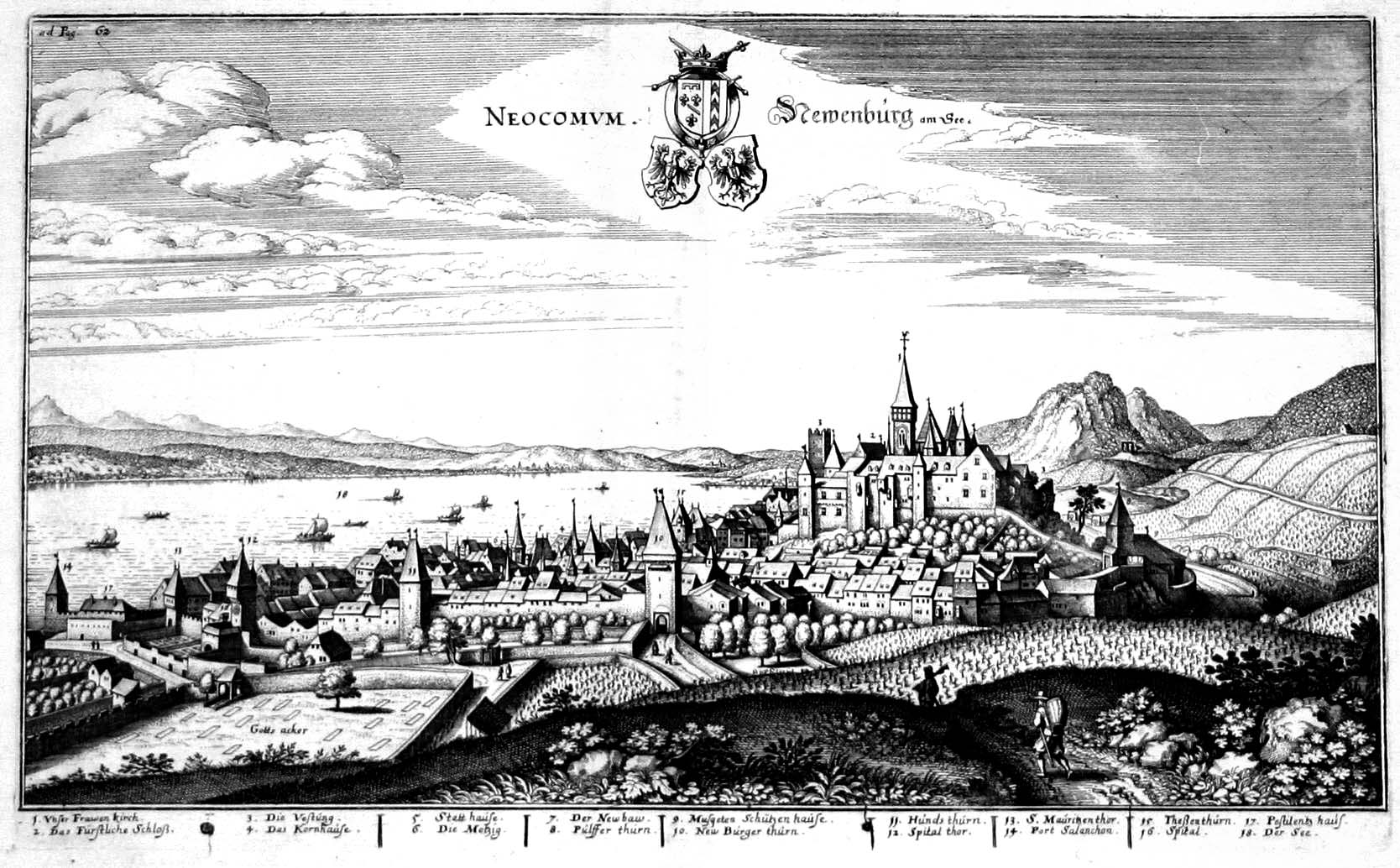|
Fasel Gang
The Fasel Gang was a group of Swiss criminals, mainly composed of Jacques Fasel, Daniel Bloch and a third sidekick, three accomplices that claimed to fight for anarchism and social justice. This social demand earned Jacques Fasel the nickname ''Robin des Bolzes''. A Bolze being an inhabitant of the lower town of Fribourg. History Daniel Bloch met Jacques Fasel in 1977 at the Bellechasse penitentiary where they were both imprisoned for conscientious objection. Arrested after a first series of attacks, including one during which a money conveyor was killed, Jacques Fasel escaped from Tavel prison in June 1979. He was recaptured in Geneva in December 1979. In May 1981, Daniel Bloch was arrested in Paris then extradited to Switzerland, while Jacques Fasel escaped from Bochuz penitentiary on July 26, 1981 in the company of five other prisoners, thus avoiding appearing at his trial in August 1981. He was then sentenced to 20 years' imprisonment. In November 1981, the third associate ... [...More Info...] [...Related Items...] OR: [Wikipedia] [Google] [Baidu] |
Canton Of Fribourg
The canton of Fribourg, also canton of Freiburg (french: Canton de Fribourg ; german: Kanton Freiburg ; frp, Canton de Fribôrg rm, Chantun Friburg it, Canton Friburgo) is located in western Switzerland. The canton is bilingual, with French spoken by more than two thirds of the citizens and German by a little more than a quarter. Both are official languages in the canton. The canton takes its name from its capital city of Fribourg. History On the shores of Lake Neuchâtel and Lake Morat significant traces of prehistoric settlements have been unearthed. The canton of Fribourg joined the Swiss Confederation in 1481. The area is made up of lands acquired by the capital Fribourg. The present extent was reached in 1803 when Murten (Morat) was acquired. The canton of Fribourg joined the separatist league of Catholic cantons in 1846 ( Sonderbund). The following year, its troops surrendered to the federal army. Geography The canton is bounded to the west by Lake Neuchâtel, to ... [...More Info...] [...Related Items...] OR: [Wikipedia] [Google] [Baidu] |
Witzwil Penitentiary
The Justizvollzugsanstalt Witzwil (Prison Witzwil) is a men's prison in the canton of Bern, Switzerland. It consists of a closed part and a number of minimum security habitation units. The prisoners work on the institution's huge farm estate on the territories of the municipalities Erlach, Gampelen and Ins in Canton of Berne and Haut-Vully in Canton of Fribourg. Former prisoners who are yet to find employment are also allowed to work on these farms. The main seat and official address are located in the community of Gampelen. History The Witzwil prison was a brainchild of Otto Kellerhals, who also served as the institution's first director in 1895. His son Hans Kellerhals took over after his retirement. The farms of the prison are on what was formerly a part of the huge marshlands called Grand Marais. It was realized that the land parcels could be reclaimed for agriculture through the Jura water correction. In 1860 Public Notary Witz from Erlach bought the whole land, which henc ... [...More Info...] [...Related Items...] OR: [Wikipedia] [Google] [Baidu] |
Le Temps
''Le Temps'' (literally "The Time") is a Swiss French-language daily newspaper published in Berliner format in Geneva by Le Temps SA. It is the sole nationwide French-language non-specialised daily newspaper of Switzerland. Since 2021, it has been owned by Fondation Aventinus, a not-for-profit organisation. According to the Research Department on Public Opinion and Society (FÖG) of the University of Zurich, it is of "high quality". History and profile First published on 18 March 1998, it is the result of the merger of three major newspapers from the Lake Geneva region: the ''Journal de Genève'', '' Gazette de Lausanne'' and '' Le Nouveau Quotidien.'' Previously owned by Ringier, it has been majority-owned by the not-for-profit Fondation Aventinus (95.5%). The remaining shares are held by the Groupe Le Monde (2.1%) and the employee-owned Société des rédacteurs et du personnel du Temps SA (2.4%). , the newspaper had around 120 employees, spread across newsrooms in Geneva ... [...More Info...] [...Related Items...] OR: [Wikipedia] [Google] [Baidu] |
Lausanne
Lausanne ( , , , ) ; it, Losanna; rm, Losanna. is the capital and largest city of the Swiss French speaking canton of Vaud. It is a hilly city situated on the shores of Lake Geneva, about halfway between the Jura Mountains and the Alps, and facing the French town of Évian-les-Bains across the lake. Lausanne is located northeast of Geneva, the nearest major city. The municipality of Lausanne has a population of about 140,000, making it the List of cities in Switzerland, fourth largest city in Switzerland after Basel, Geneva, and Zurich, with the entire agglomeration area having about 420,000 inhabitants (as of January 2019). The metropolitan area of Lausanne-Geneva (including Vevey-Montreux, Yverdon-les-Bains, Valais and foreign parts), commonly designated as ''Lake Geneva region, Arc lémanique'' was over 1.3 million inhabitants in 2017 and is the fastest growing in Switzerland. Initially a Celtic and Roman settlement on the shores of the lake, Lausanne became a town at ... [...More Info...] [...Related Items...] OR: [Wikipedia] [Google] [Baidu] |
Anarchism In Switzerland
Anarchism in Switzerland appeared, as a political current, within the Jura Federation of the International Workingmen's Association (IWA), under the influence of Mikhail Bakunin and Swiss libertarian activists such as James Guillaume and Adhémar Schwitzguébel. Swiss anarchism subsequently evolved alongside the nascent social democratic movement and participated in the local opposition to fascism during the interwar period. The contemporary Swiss anarchist movement then grew into a number of militant groups, libertarian socialist organizations and squats. History In August 1291, an alliance was formed between the cantons of Uri, Schwyz and Unterwalden, establishing the Swiss Confederacy with imperial immediacy, which allowed for the territory's autonomy from the Holy Roman Empire. During the growth of the Old Swiss Confederacy throughout the 14th and 15th centuries, it continued to assert its autonomy through a number of conflicts against noble houses such as the Habsburgs an ... [...More Info...] [...Related Items...] OR: [Wikipedia] [Google] [Baidu] |
Marin-Epagnier
Marin-Epagnier was a municipality in the district of Neuchâtel in the Swiss canton of Neuchâtel. On 1 January 2009, Marin-Epagnier and Thielle-Wavre merged to form the new municipality of La Tène.Amtliches Gemeindeverzeichnis der Schweiz published by the Swiss Federal Statistical Office accessed 14 January 2010 It is located at the northeastern tip of at an elevation of 455 meters, and, , a population of 3,925 people. It lies close to , at the boundary between [...More Info...] [...Related Items...] OR: [Wikipedia] [Google] [Baidu] |
Lake Neuchâtel
Lake Neuchâtel (french: Lac de Neuchâtel ; frp, Lèc de Nôchâtél; german: Neuenburgersee) is a lake primarily in Romandy, in the French-speaking part of Switzerland. The lake lies mainly in the canton of Neuchâtel, but is also shared by the cantons of Vaud, Fribourg, and Bern. It comprises one of the lakes in the Three Lakes Region (French: ''Pays des Trois-Lacs'', German: ''Drei-Seen-Land''), along with lakes Biel/Bienne and Morat/Murten. With a surface of , Lake Neuchâtel is the largest lake located entirely in Switzerland and the 59th largest lake in Europe. It is long and at its widest. Its surface is above sea level, and the maximum depth is . The total water volume is . The lake's drainage area is approximately and its culminating point is Le Chasseron at . In comparison to the Lake Geneva region, the Lake Neuchatel shoreline has experienced significant economic development with the completion of the regional motorway network. It is also known to have hou ... [...More Info...] [...Related Items...] OR: [Wikipedia] [Google] [Baidu] |
Neuchâtel
Neuchâtel (, , ; german: Neuenburg) is the capital of the Swiss canton of Neuchâtel, situated on the shoreline of Lake Neuchâtel. Since the fusion in 2021 of the municipalities of Neuchâtel, Corcelles-Cormondrèche, Peseux, and Valangin, the city has approximately 45,000 inhabitants (80,000 in the metropolitan area). The city is sometimes referred to historically by the German name ; both the French and German names mean "New Castle". It was originally part of the Kingdom of Burgundy, then part of the Holy Roman Empire and later under Prussian control from 1707 until 1848, with an interruption during the Napoleonic Wars from 1802 to 1814. In 1848, Neuchâtel became a republic and a canton of Switzerland. Neuchâtel is a centre of the Swiss watch industry, the site of micro-technology and high-tech industries, and home to research centres and organizations such as the Swiss Center for Electronics and Microtechnology (CSEM), and Philip Morris International's ''Cube''. The ... [...More Info...] [...Related Items...] OR: [Wikipedia] [Google] [Baidu] |
Hauterive (Neuchâtel)
{{geodis ...
Hauterive may refer to: *In Switzerland: **Hauterive, Neuchâtel **Hauterive, Fribourg *In France: ** Hauterive, Allier **Hauterive, Orne **Hauterive, Yonne *In Canada: ** Hauterive, Quebec, now part of Baie-Comeau See also *Abbey of Hauterive, in Posieux, Hauterive, Fribourg, Switzerland *Hauterive-la-Fresse, Doubs department, France *Alexandre Maurice Blanc de Lanautte, Comte d'Hauterive (1754–1830) *Hauterives Hauterives () is a commune in the Drôme department in southeastern France. It is home to Ferdinand Cheval's self-made Palais idéal. Geography The Galaure flows southwest through the middle of the commune. Population See also *Communes of ... [...More Info...] [...Related Items...] OR: [Wikipedia] [Google] [Baidu] |
Val De Travers
Val-de-Travers District was one of the six districts of the canton of Neuchâtel, Switzerland, until the district level was eliminated on 1 January 2018. It is famous for its clock industry. The Canton is largely rural and farming remains important, but it also had significant industry from the 17th century due to the hydro-power available at St Sulpice, and Asphalt was mined from 1711 to 1986 at Travers. It had a population of 11,898. Municipalities Between the creation of Val-de-Travers in 2009 and its elimination in 2018, three municipalities made up the district: Merger * On 1 January 2009, the former municipalities of Boveresse, Buttes, Couvet, Fleurier, Les Bayards, Môtiers, Noiraigue, Saint-Sulpice and Travers merged to form Val-de-Travers.Amtliches Gemein ... [...More Info...] [...Related Items...] OR: [Wikipedia] [Google] [Baidu] |
Villars-sur-Glâne
Villars-sur-Glâne (; frp, Velârs-sur-Gllânna ) is a municipality in the district of Sarine in the canton of Fribourg in Switzerland. Geography Villars-sur-Glâne has an area, , of . Of this area, or 29.3% is used for agricultural purposes, while or 17.5% is forested. Of the rest of the land, or 51.5% is settled (buildings or roads), or 1.3% is either rivers or lakes.Swiss Federal Statistical Office-Land Use Statistics 2009 data accessed 25 March 2010 Of the built up area, industrial buildings made up 4.9% of the total area while housing and buildings made up 27.7% and transportation infrastructure made up 13.8%. Power and water infrastructure as well as other special developed areas made up 2.7% of the area while parks, green belts and sports ... [...More Info...] [...Related Items...] OR: [Wikipedia] [Google] [Baidu] |
Jumbo (supermarket)
Jumbo is a supermarket chain in the Netherlands and Belgium. It is part of the privately owned Van Eerd Group. Van Eerd was originally a grocery wholesale company established in 1921. With 740 stores and a market share of about 22%, Jumbo is the second largest supermarket chain in the Netherlands, behind Albert Heijn. History On 18 October 1979, Jan and Anita Meurs opened the first Jumbo supermarket in a former church building in Tilburg. It was named after the elephant Jumbo as an act of one-upping the name of a local rival store called Torro, which belonged to Van Eerd. In 1983, Van Eerd bought the Jumbo store from the Meurs family and subsequently expanded, first in the southern provinces, then nationwide. , 77 establishments have been opened throughout the Netherlands. Together, they have a market share of 3.4% in the Netherlands as of 1 January 2006. The head office and distribution centre are situated in Veghel. Jumbo has three regional distribution centres: Beilen, Dra ... [...More Info...] [...Related Items...] OR: [Wikipedia] [Google] [Baidu] |




